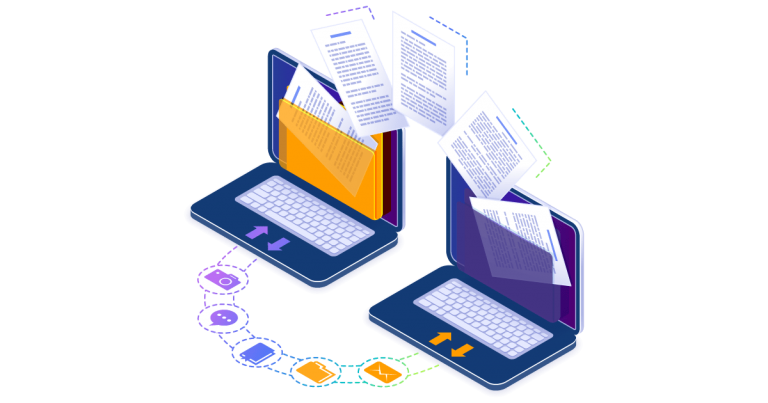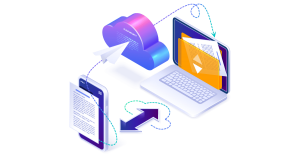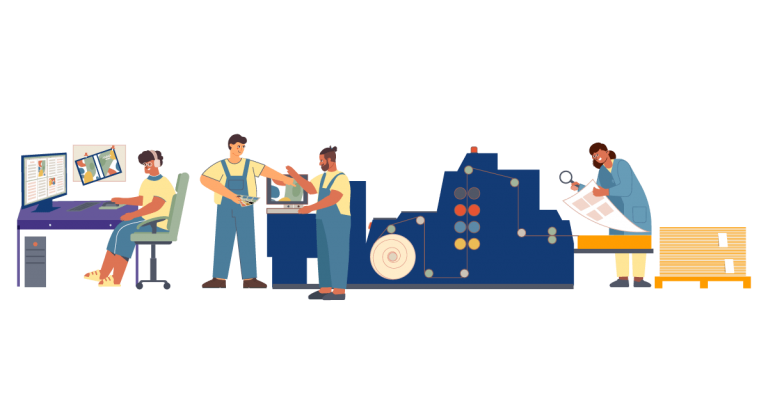“If you file your waste paper basket for fifty years, you have a public library” well said by Mr Tony Ben. As soon as a child starts his schooling they end up using more than 10k papers on an average an average. It may not sound a very big figure to you but yes it is a massive amount of paper wastage when we multiply it by all the people living on this planet. I think it’s high time we talked about this as adults and didn’t run away from the problem like 7 year old’s
What is the real problem?
Recollect how long you went through every week getting ready and printing archives, just to watch them stroll from the understudy work areas to the floor, the garbage can or the lower part of their rucksacks? For instructors living in the paper age, this was the truth.

These days, the possibility of a paperless homeroom is something other than a pattern. Schools the nation over now pick to supplant conventional pen and paper with applications and other programming. What’s more, the instructors, schools, and above all understudies are benefited as innovation moves along. To limit homeroom squander, understudies work-advance carefully, and educators share freebees and evaluated PC work, Schools the nation over utilize online capacity and document sharing devices to make, store and divide records among understudies and instructors as a virtual clearinghouse. Similarly, to change such study hall life carefully, Intel School accompanies the online ERP School Management framework that recoveries time, cash, paper (climate) and improve proficiency.
What is Paperless Education?
Whenever one discussions of paperless instruction, the immediate thoughts that pop to one are maybe challenging to grade papers, an absence of training of handwriting, and a general decrease in the development of fitness. Old-school instructors feel that assuming they let innovation attack training like it has attacked different parts of a human’s existence, they’ll hamper learning.

Yet, is this dread substantial? We should do what is specialized in such overwhelming circumstances — make a Pros and Cons list!
Pros of Adapting Paperless Education
1. Environment-friendly system
More papers mean more tree-cutting and this is not such good practice as far as the environment is concerned. Going paperless is the best option and a digital transformation of education makes this possible. Every piece of information and data is available online and can be accessed by people with relevant information. The conventional way involved people searching for information in a sea of papers. However, with the help of the school management system, all that needs to be done is to type in the question and the pertinent results are displayed within moments.
2. Better resource management
Paperless schooling innovation sets aside a great deal of cash. The saving can be utilized for providing better training to the understudies. The review material for each subject is accessible on the web. Printing books, keeping up with them and involving them for everyday homeroom exercises should be possible away with. The cash that is saved can be utilized for working on the offices and foundation as they go far in making an effective school. In this way, the accessible assets are overseen better. Human mediation is diminished in paperless schools thus, the possibilities of blunders are likewise limited. This is one more advantage that schools can consider for improving their resource allocation.
3. Data security
Information put away in a cloud-based framework is a lot of secure when contrasted with the traditional papers. Not every person approaches everything. There are discrete modules for heads, educators, guardians, understudies and higher administration. Simply by utilizing applicable qualifications could anybody at any point get data from the internet based framework. Along these lines, the security of the information is kept up with consistently by keeping it from falling into some unacceptable hands.
4. Seamless admissions process
Online forms make it easier for parents and administrators to handle the most important activity of any school – admissions. Parents can download the form from the school’s website and can submit it online once completed. The admin staff can go through these and proceed further. This is a paperless process that saves a lot of time and effort on everyone’s part.
5. Effective communication
Paperless study halls have assumed control over the traditional homeroom preventive from the Covid pandemic that has made ruin around the world. In such a circumstance, having a powerful correspondence framework goes far. Since guardians and the school delegates can’t sit and talk about the advancement of the particular understudies, having a restrictive internet based module for this object is fundamental. Additionally, teachers and students must communicate regularly for the best learning experience. Paperless classrooms and the respective features in the school ERP software enable the same.
Cons of Going with Paperless Education
Everything that seems to have unbeatable pros do have a trail of cons that follow. How significant and difficult they are to work around, I’ll let you be the judge of it.
1. Affording the Conversion from Traditional to Paperless
Some do not have the funding necessary for going through such a major transformation. There are a vast majority of institutions in economically backward countries that have students who barely can afford books to study. Sometimes, in our glory of privilege, we fail to acknowledge others who do not share similar opportunities as us. Therefore, to them, as titillating as paperless education sounds, it can’t be a possible reality.
2. Making your Brain Lethargic by taking too much help from Technology
This is the same brain that used to memorize phone numbers a few times after dialling them. We were experts at roads and directions because Google Maps wasn’t an alternative in case we got lost. So now that we study ourselves, we cannot deny the fact that we indeed are turning into comfort-loving beings that dumps all the hard work on technology. Presently, in such occasions, the main comfort was the preparation our minds get in the developmental tutoring years. Through lively learning and working on everything progressively, to some extent in the learning stage, understudies are figuring out how to practice their Intelligence Quotient. With reliance on innovation, we will not have even that.
3. Constant need of Active and Dedicated Tech Staff in Institutions
The goal of most specialized blunders needs the support of some certified IT experts. This implies employing full-time staff committed to dealing with the innovation in the school. As of now, most schools that have ‘shrewd classes’ (a projector, PC, and a screen) could have somebody on the finance to guarantee that the tech is state-of-the-art. But when transforming into an entirely paperless system of education, dependency on this technology increases by much . This means that if for any reason the tech fails, it will hamper the learning for an entire day.
What can be a possible solution?

“Excess of anything is bad” truly said by a young man. Whether it is the usage of paper or the use of technology if the resource is being used in excess then it will always create problems. Both the resources have their own advantages and drawbacks so both the resources should be used in a proportion so that there is a good balance between both of them and so that the drawbacks are minimised. This time even the Financial budget for this year was made paperless and was read digitally on an Electronic Tablet, it refers how important it is to save paper for the National Government too.
Conclusion
Do the aces offset the cons? Or then again does paperless training have such a large number of cons to think about it as a reasonable choice? I’ll allow you to be the judge of that. What I cannot deny is that nothing is steady, particularly our general surroundings. Instruction will continue advancing and the strategies for learning will develop. How we take up to that change and adjust to it is the deciding factor. Practicing that should be significant for it to be significant and sustainable for the approaching ages. In any case, the most common way of adapting the change should be simple and open with a wide assortment of networks, societies, and individuals. What’s more, that is something that will be the defining factor for the mission for paperless education.
